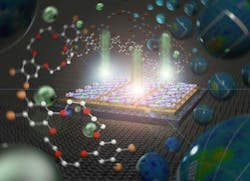Cobalt Nanoclusters Hold Promise For Single-Atom Catalysis
Researchers at Chiba University, Japan, have achieved a groundbreaking method for forming nanoclusters (NCs) of transition metals, such as cobalt, with atomic-scale precision. NCs play a vital role in drug delivery and water purification, and downsizing them enhances functionalities. The team, whose study was featured in the Journal of Materials Chemistry C, successfully grew cobalt NCs on flat copper surfaces using molecular arrays, specifically ring-shaped molecular structures known as "crown ethers." This innovative approach allows for the precise control of NC formation at room temperature. The resulting cobalt NCs exhibited two distinct sizes, 1.5 nm and 3.6 nm, and the study's advanced techniques shed light on stable surface sites and electronic hybridization influences. The breakthrough holds promise for applications like single-atom catalysis and spintronics miniaturization, contributing to the development of an information-based society while reducing carbon dioxide production.
